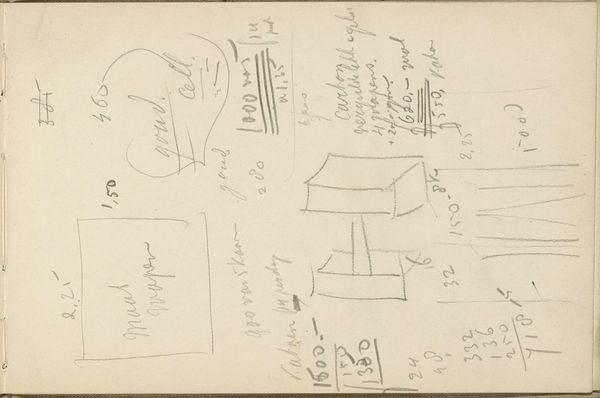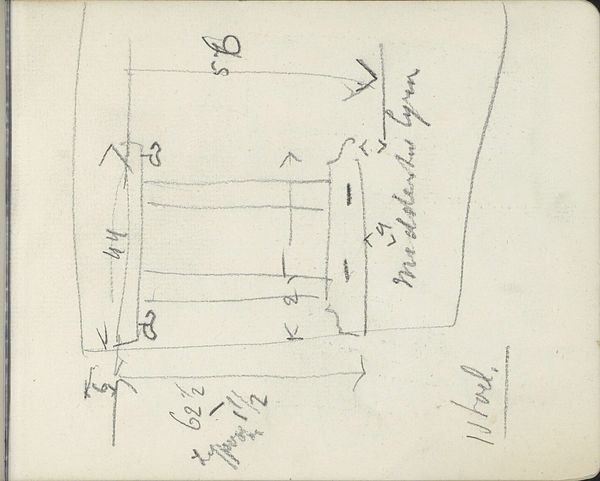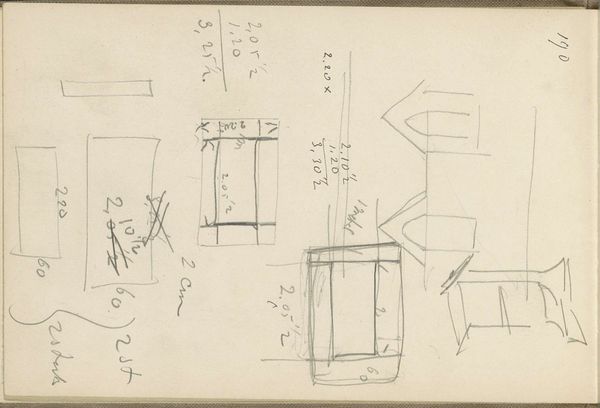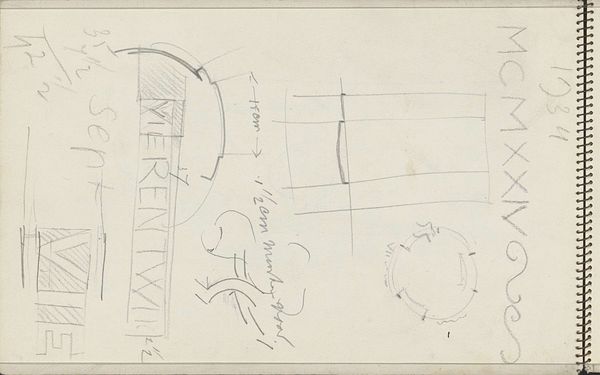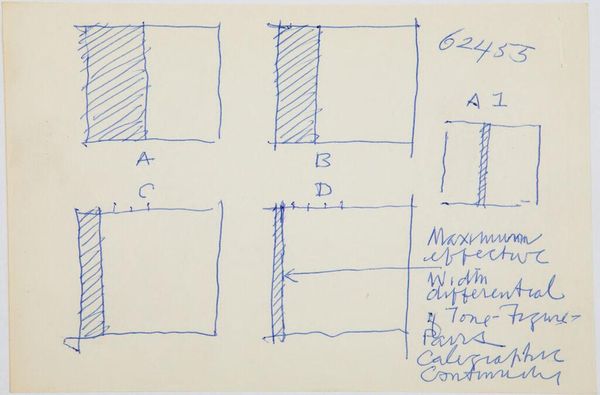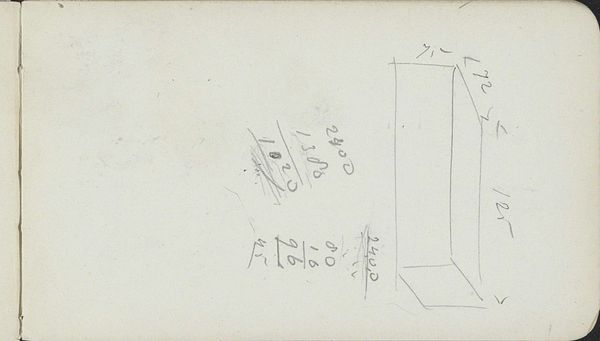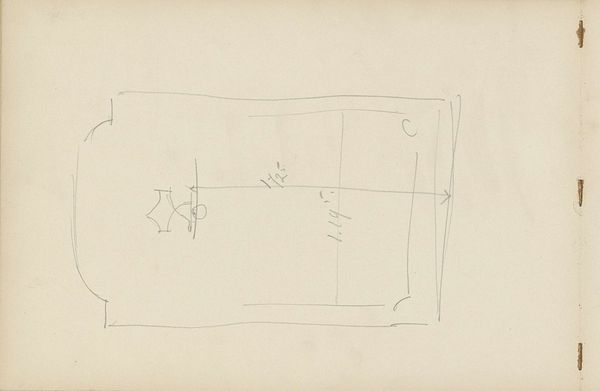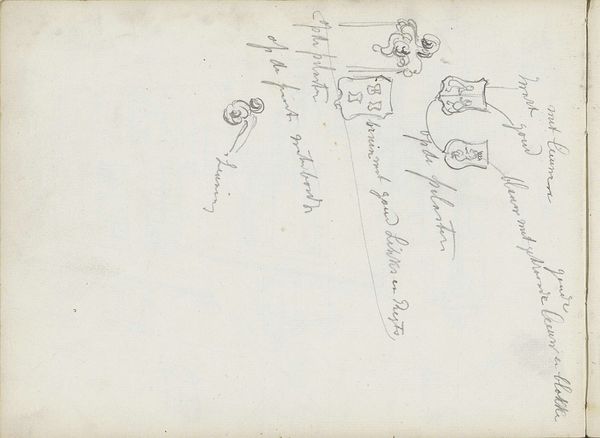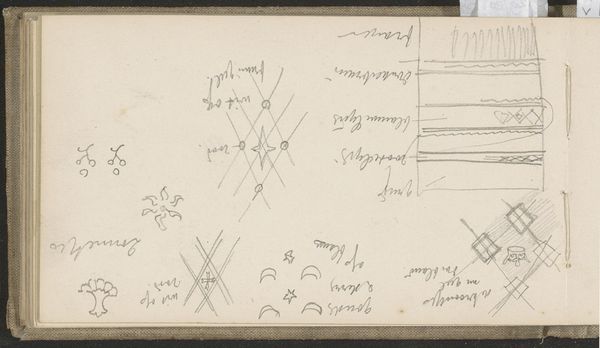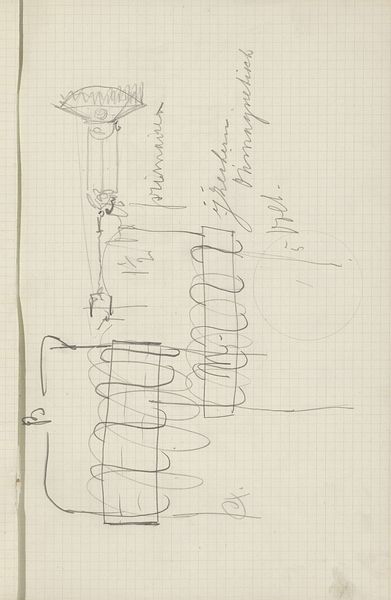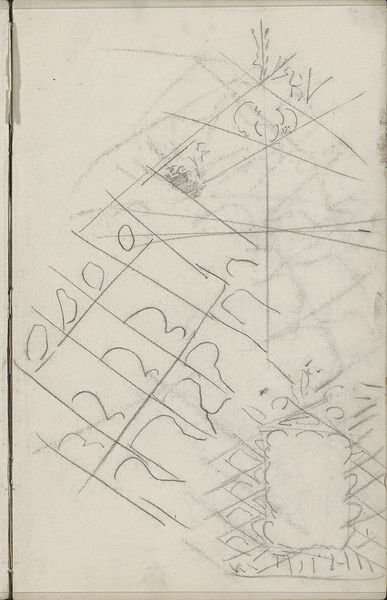
drawing, paper, pencil
#
drawing
#
comic strip sketch
#
hand drawn type
#
paper
#
personal sketchbook
#
idea generation sketch
#
sketchwork
#
ink drawing experimentation
#
geometric
#
sketch
#
pen-ink sketch
#
pencil
#
abstraction
#
sketchbook drawing
#
sketchbook art
#
modernism
#
initial sketch
Copyright: Rijks Museum: Open Domain
Curator: Let's consider this drawing by Carel Adolph Lion Cachet, "Hand die een potlood vasthoudt" from around 1905, made with pencil and ink on paper, currently held at the Rijksmuseum. What are your initial impressions? Editor: Well, it looks like a page from a sketchbook, kind of rough and raw. There are geometric shapes, some writing, and a hand holding a pencil. It feels more like a set of notes than a finished artwork, doesn't it? I am really interested in the hand: what’s its purpose within the whole composition? Curator: I'm drawn to that same thing; the "Hand die een potlood vasthoudt" is a sketch, so we need to think about labor, and about how the artist is literally, manually recording these geometric studies and calculations, by *hand.* Are we to understand art primarily through the labor, and how the idea of this hand, of drawing, might function? What do you make of these geometrical drawings beside the human form holding the tool to create art? Editor: They seem almost technical or architectural, more about measurement and structure. Like he's working out the logistics of something, perhaps? It feels very utilitarian, the opposite of the romantic idea of art. It clashes somewhat. Curator: Exactly! By explicitly showing his tools and notes, the artist collapses that romantic divide. It challenges notions of inherent artistic talent. He foregrounds art-making as a conscious process, almost an engineering one. How does thinking about the physical materials and the process affect your view of art in general? Editor: It makes me consider how much the tools and labor contribute to the final piece, more than just inspiration. Curator: Precisely. We see the means of production, blurring the boundaries of 'high' art and everyday work. Editor: This has opened my eyes to considering art as something more hands-on and labor-intensive, as a work process that involves studies and drafts.
Comments
No comments
Be the first to comment and join the conversation on the ultimate creative platform.
